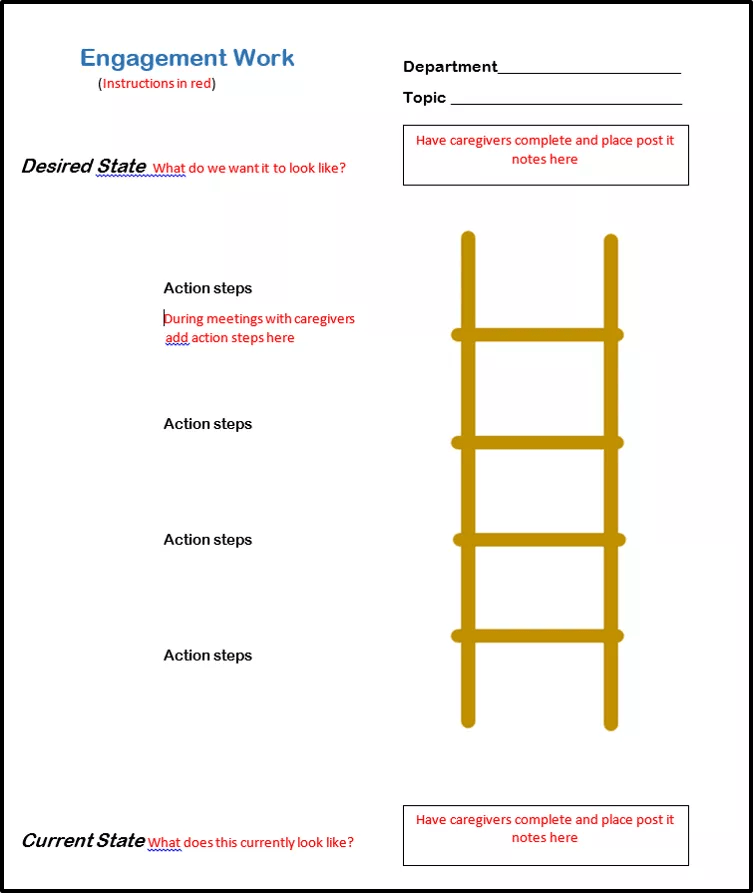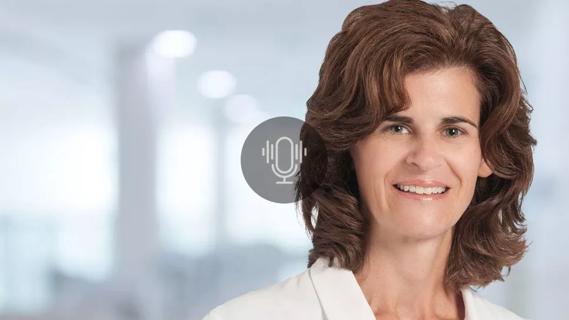Advertisement
Process relies on structural-tension model to crystalize goals and identify actions

Nursing leaders at Cleveland Clinic Akron General Hospital are adopting a new tool to help identify improvements that can be made in caregiver engagement and develop a shared plan for achieving those goals.
For nurses in every area of the hospital, the aim is that the Nursing Engagement Action Plan will boost their efforts in following up on a survey that Cleveland Clinic issues to caregivers, says Sheila A. Miller, DNP, MBA, RN, NEA-BC , Chief Nursing Officer of Cleveland Clinic Akron General.
Advertisement
Cleveland Clinic is a non-profit academic medical center. Advertising on our site helps support our mission. We do not endorse non-Cleveland Clinic products or services. Policy
“Every nurse leader here at Cleveland Clinic Akron General will address three things during their engagement planning,” she says. “We are giving them two topics, and one will be of their choosing.”
The given areas of focus are autonomy and quality, represented by these statements:
“The nurse executive team, along with our Magnet® program manager, thought there was room for improvement in these areas, and we really wanted to focus on them,” Miller says. Using a standardized process for every area of nursing is expected to enhance that focus, she adds.
For the third area of focus, nursing leaders are working with their teams to select topics that will be most meaningful for them. “Some people have asked whether they could they do more than three, and the answer was ‘Of course,'” Miller says.

Every nursing department received posters that aid the planning itself and also serve as a visual cue to keep the process top-of-mind. The design relies on the serving leader concept of structural tension, and is represented by a ladder. Participants describe a current reality, which is written at the base of the ladder, and a desired state, which written at the top of the page. The steps needed to bridge the gap are identified and added as the ladder rungs.
The current and desired states work can be done through group discussion, Miller says, but in practice, because it can be so challenging to convene everyone, departments may choose to use sticky notes to allow nurses to contribute their ideas. Clarification and action planning can be done in a follow-up discussion.
Advertisement
Robust participation is key.
“We want to understand what it looks like from a caregiver’s perspective if we’re not doing as well as we’d like in a certain area,” Miller explains. “In the area of quality improvement, for example, does the engagement gap exist because nurses don’t feel involved in quality improvement projects? Is it that they aren’t seeing quality-related data? Does it mean that they don’t have a chance to participate in process confirmation? If the feedback we’re getting is, ‘We could do better in this,’ what does it look like right now, and what would it look like if we were doing better?”
Taking meaningful action depends on understanding the nurses’ perception, Miller says. Getting it wrong can result in a sense of frustration, as she learned years ago when she worked at another hospital. “Communication” had been identified on a survey as an area ripe for improvement, and nursing leaders had been thinking that the nurses meant leaders’ communications from them to caregivers.
“The leaders had been talking about sending more newsletters,” Miller says. “But what I heard when I sat in on a discussions session was that the nurses were concerned about communication between departments, and communications with each other. We could have put together newsletters and fixed up our intranet site, and not solved the problems. When we know that the nurses’ are concerned with how they communicate with each other, the solutions look very different.”
Displaying the poster with completed responses also will allow rounding senior leaders to see what each department is working on, and have meaningful discussions about the details, Miller adds. With the details spelled out and on display, and leaders will be able to inquire of caregivers about progress and whether department members have what they need. “Hopefully, that helps to close the loop around the actions that they’re taking,” she says.
Nursing departments all have received instructions and the posters, and teams have begun identifying their goals and related actions. The next step in the process will be to be for leaders to reconvene to discuss caregiver feedback and begin implementation.
How well the process works is expected to become clearer after the next engagement survey, but Miller is confident that the tool at the very least will improve communications. “Even as I did a training session with the nurse leaders here, I discovered was that what I thought they meant [by responses on a survey question] and what they meant were different,” she says. “There was much more to their responses than I would have concluded on my own.”
Advertisement
Advertisement

Education, training and reporting can help reduce workplace violence in healthcare

Wound, ostomy and continence nurses provide skin assessments, wound prevention measures, treatment and education

Virtual model enables around-the-clock management of common acute conditions

Resources, education, mentoring help nurses segue to formal leadership roles

Holistic nurses work across all nursing specialties to support patients and caregivers

Nurses play pivotal role in patients’ ability to recover in the comfort of their own homes

Advocating for patient safety is imperative in fast-paced surgical settings

Advice for those pursuing a WOC nursing career